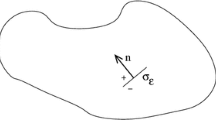Abstract
An algebraic classification scheme for toppoints in scale space is proposed. A critical point is a point whose spatial derivatives are zero, and a toppoint is a critical point in which the Hessian does not have full rank. A critical curve is a curve consisting of critical points. It is proposed that toppoints be classified according to the number of critical curves that intersect at the toppoint.
Toppoints are analyzed further when one or two critical curves pass through the toppoint. If the Hessian is of rank one, a single critical curve passes through the toppoint; an extremum and a saddle point meet along a curve with a horizontal tangent at the toppoint. Two possibilities exist in the generic case. Either an extremum and a saddle point approach each other with increasing scale and disappear at the toppoint, or an extremum and a saddle are created at the toppoint and diverge from each other at increasing scale.
If two critical curves intersect at a toppoint, there are again two different cases when Gaussian blurring is used. In the first case the Hessian has rank zero and the two curves intersect with horizontal perpendicular tangents. Two subcases occur, depending on the root structure of the cubic form of the Taylor expansion of the image at the toppoint. If this cubic form has a single real root, two extrema and two saddles approach the toppoint from below and disappear at the toppoint. The two extrema approach each other along a tangent from opposite directions. Similarly, the two saddles approach each other along the perpendicular tangent. If the cubic form has three distinct real roots, two saddles approach each other from below along a tangent from opposite directions. Above the toppoint the two saddles separate from each other in the perpendicular direction.
In the second case the Hessian has rank one and there also exists another algebraic constraint on the coefficients of the cubic form of the Taylor expansion of the image of the toppoint. Two critical curves intersect at the toppoint. Again, two subcases occur, depending on whether the curves are real or complex. If the curves are real, there are two tangents at the intersection point but they are not horizontal, as in the previous subcase. An extremum and a saddle approach each other from below. Above the toppoint an extremum and a saddle separate from each other. The saddle above the toppoint moves in the same direction as the extremum below the toppoint, and the extremum above the toppoint moves in the same direction as the saddle below the toppoint. If the curves are complex, the toppoint is an isolated point in scale space.
Similar content being viewed by others
References
A. Rosenfeld and M. Thurston, “Edge detection and curve detection for visual scene analysis,”IEEE Trans. Comput., vol. C-20, pp. 562–569, 1971.
D. Marr,Vision Freeman: San Francisco, 1982.
A. Witkin, “Scale space filtering,” inProc. International Joint Conference on Artificial Intelligence, Karlsruhe, 1983, pp. 1019–1021.
J.J. Koenderink, “The structure of images,” Biol. Cybernet. vol. 50, pp. 363–370, 1984.
R. Hummel and R. Moniot, “Reconstructions from zero crossings in scale space,”IEEE Trans. Acoust., Speech, Signal Process. vol. 37, pp. 2111–2130, 1989.
A.L. Yuille and T. Poggio, “Fingerprints theorems for zero crossings,”J. Opt. Soc. Amer., vol. 2, pp. 683–692, 1985.
P. Johansen, S. Skelboe, K. Grue, and J.D. Andersen, “Representing signals by their toppoints in scale space,” inProc. 8th International Conference on Pattern Recognition, Paris, 1986, pp. 215–217.
T. Lindeberg, “Discrete scale-space theory and the scalespace primal sketch,” Ph.D. dissertation, Department of Numerical Analysis and Computer Science, Royal Institute of Technology, Stockholm, 1991.
D.V. Widder,The Heat Equation Academic Press: New York, 1975.
B.L. van der Waerden,Algebra II, Springer-Verlag: Berlin, 1960.
W. Fulton,Algebraic Curves Addison-Wesley: Reading, MA, 1989.
T. Poston and I.N. Stewart,Taylor Expansions and Catastrophes Pitman: New York, 1976.
Author information
Authors and Affiliations
Rights and permissions
About this article
Cite this article
Johansen, P. On the classification of toppoints in scale space. J Math Imaging Vis 4, 57–67 (1994). https://doi.org/10.1007/BF01250004
Issue Date:
DOI: https://doi.org/10.1007/BF01250004




